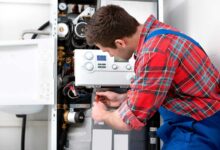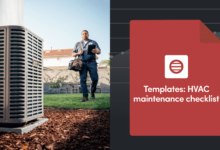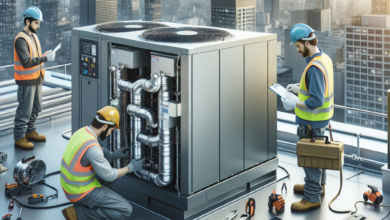Can a Heater be Repaired? Exploring the Possibilities
Can Heater be Repaired? – When the chilly breeze of winter arrives, a reliable and functional heater becomes a necessity. However, encountering issues with your heater can disrupt your comfort and leave you wondering if it can be repaired. In this in-depth guide, we will delve into the various aspects of heater repair, exploring the potential solutions and benefits, as well as discussing when it might be time to consider a replacement.
Before diving into the details, it’s important to understand that the repairability of your heater depends on several factors. The type and extent of the issue, the age of your heater, and the availability of spare parts all play a role in determining whether repairs are possible. By understanding these factors, you can make an informed decision about the best course of action.
Common Heater Problems and Solutions
Heater problems can vary, from minor glitches to more complex issues. By understanding these common problems and their potential solutions, you can troubleshoot and potentially repair your heater without professional assistance.
1. Thermostat Issues
A malfunctioning thermostat can cause your heater to behave erratically or not produce heat at all. If you notice inconsistent temperatures or your heater not responding to adjustments, the thermostat may be at fault. In some cases, recalibrating or replacing the thermostat can solve the problem, restoring your heater’s functionality.
2. Pilot Light Malfunctions
For gas-powered heaters, a pilot light that won’t stay lit can prevent your heater from working correctly. This issue is often caused by a faulty thermocouple, which is responsible for detecting the pilot flame. Cleaning or replacing the thermocouple can resolve the problem and allow your heater to function properly again.
3. Ignition Problems
If your heater fails to ignite altogether, it could indicate an issue with the ignition system. A faulty ignition switch or a worn-out igniter can prevent the heater from starting up. Replacing these components can often solve the problem and restore the functionality of your heater.
4. Airflow Blockages
Restricted airflow can lead to inadequate heating or a complete shutdown of your heater. Dust, debris, or even a blocked vent can impede the flow of air, causing your heater to struggle or malfunction. Regularly cleaning and maintaining your heater and its surrounding areas can help prevent airflow blockages and keep your system running smoothly.
5. Blower Motor Issues
A malfunctioning blower motor can result in poor airflow or no heat circulation at all. Over time, the motor’s bearings may wear out or the fan belt may become loose. Replacing or repairing the blower motor can restore proper airflow and optimize your heater’s performance.
6. Leaking Ductwork
Ductwork leaks can cause heat loss and inefficient heating. Leaks can occur due to aging, poor installation, or damage. Locating and sealing these leaks can significantly improve your heater’s efficiency and reduce energy wastage.
7. Strange Noises
If your heater is producing unusual sounds, such as rattling, banging, or squealing, it may indicate loose or damaged components. Ignoring these noises can lead to more significant issues down the line. Identifying and repairing the source of the noise can prevent further damage and ensure your heater operates quietly and efficiently.
8. Electrical Problems
Electrical issues, such as blown fuses or tripped circuit breakers, can disrupt your heater’s performance and cause it to stop working altogether. Identifying and resolving these electrical problems, either by replacing fuses or resetting breakers, can often bring your heater back to life.
9. Gas Supply Problems
Gas-powered heaters rely on a steady supply of fuel to operate effectively. If you’re experiencing a lack of heat or your heater is not igniting, it’s essential to check the gas supply. Ensure the gas valve is open and that there are no issues with the gas line. Consulting a professional gas technician can help diagnose and resolve gas supply problems.
10. Heat Exchanger Malfunctions
A damaged or cracked heat exchanger can lead to a variety of problems, including carbon monoxide leaks and decreased efficiency. If you suspect a heat exchanger issue, it’s crucial to seek professional assistance, as these repairs require expertise and specialized tools.
By understanding these common heater problems and their potential solutions, you can attempt to troubleshoot and repair your heater on your own. However, it’s essential to keep safety in mind and consult a professional if you are uncertain or uncomfortable with the repair process.
DIY Heater Repairs: Pros and Cons
When facing heater issues, the idea of saving money by attempting DIY repairs can be tempting. However, it’s essential to weigh the pros and cons before embarking on a DIY repair journey.
Benefits of DIY Heater Repairs
1. Cost Savings: DIY repairs can save you money on service fees and labor costs associated with hiring a professional technician.
2. Knowledge and Skill Development: Attempting DIY repairs allows you to gain valuable knowledge and develop new skills, empowering you to handle future repairs confidently.
3. Convenience and Timeliness: With the necessary tools and spare parts readily available, you can often address the issue immediately without having to wait for a professional technician.
Drawbacks of DIY Heater Repairs
1. Lack of Expertise: Heating systems can be complex, and attempting repairs without the required knowledge and expertise can lead to further damage or safety hazards.
2. Voided Warranty: If your heater is still under warranty, DIY repairs may void the warranty, leaving you responsible for any future repairs or replacements.
3. Time and Effort: DIY repairs can be time-consuming, especially if you’re not familiar with the inner workings of your heater. Additionally, troubleshooting and sourcing the correct replacement parts can be challenging.
Before attempting DIY repairs, carefully consider your skill level, the complexity of the issue, and the potential risks involved. It’s always wise to consult professional technicians for complex problems or if you are uncertain about the repair process.
When to Call a Professional
While DIY repairs can save you money, there are instances where it’s best to leave the job to the professionals. Recognizing the signs that indicate the need for professional heater repair services is crucial for your safety and the longevity of your heating system.
1. Gas Leaks
If you suspect a gas leak, it’s vital to prioritize your safety and evacuate the premises immediately. Gas leaks can be life-threatening and should only be addressed by professional gas technicians who have the necessary training and equipment to handle such situations.
2. Complex Electrical Issues
Heaters involve intricate electrical systems that require specialized knowledge to diagnose and repair. If you’re experiencing complex electrical problems, such as wiring issues or control board malfunctions, it’s best to consult a licensed electrician or HVAC technician for assistance.
3. Frequent Breakdowns
If your heater experiences frequent breakdowns despite your attempts at repairs, it’s a sign that there may be an underlying issue that requires professional attention. Continuous breakdowns can indicate a more significant problem that may require replacement or extensive repairs.
4. Carbon Monoxide Concerns
Carbon monoxide leaks can be deadly, as this odorless gas is difficult to detect without proper equipment. If you suspect a carbon monoxide leak, such as experiencing flu-like symptoms or noticing soot around the heater, immediately evacuate the area and contact a professional to assess and resolve the issue.
5. Unusual Smells
If your heater emits unusual odors, such as a burning or musty smell, it could indicate a problem that requires professional attention. Ignoring these smells can lead to safety hazards or further damage to your heater.
6. Manufacturer’s Recommendations
Consult your heater’s manufacturer guidelines and warranty information. Some repairs may require professional assistance to maintain the warranty coverage.
When in doubt, it’s always best to err on the side of caution and consult a professional. Professional technicians have the expertise, experience, and equipment necessary to diagnose and repair complex heater issues, ensuring your safety and the optimal performance of your heating system.
The Cost of Heater Repairs vs. Replacement
When faced with a malfunctioning heater, one of the key considerations is the cost associated with repairs versus replacement. Understanding the financial implications can help you make an informed decision that aligns with your budget and long-term goals.
Repair Costs
The cost of repairs can vary depending on the type and extent of the issue, as well as the rates charged by technicians in your area. Minor repairs, such as replacing a faulty thermostat or cleaning a clogged vent, may be relatively inexpensive. However, more complex repairs, such as fixing a damaged heat exchanger or replacing a blower motor, can be costly.
Replacement Costs
If your heater is beyond repair or if the cost of repairs exceeds the value of the unit, replacement becomes a more viable option. The cost of a new heater depends on factors such asthe type of heater, its size, features, and energy efficiency rating. Additionally, installation costs should be considered, especially if significant modifications or upgrades are required to accommodate the new unit.
Considerations for Repair
When deciding whether to repair or replace your heater, consider the following factors:
1. Age of the Heater
Heaters have an average lifespan of around 15-20 years. If your heater is nearing the end of its expected lifespan, investing in costly repairs may not be the most financially prudent decision. Instead, it may be more practical to allocate those funds towards a new, more energy-efficient unit that will provide long-term savings.
2. Energy Efficiency
Older heaters tend to be less energy-efficient compared to newer models. By upgrading to a more energy-efficient heater, you can potentially reduce your energy consumption and lower your utility bills. Consider the potential long-term savings in energy costs when weighing the decision to repair or replace.
3. Frequency of Repairs
If you find yourself frequently needing repairs for your heater, it’s a clear indication that the unit is no longer reliable. Continually investing in repairs can quickly add up, making replacement a more cost-effective solution in the long run.
4. Warranty Coverage
Check if your heater is still covered by a warranty. If the repairs needed are covered under the warranty, it may be more cost-effective to have them done by a professional technician rather than incurring out-of-pocket expenses for a replacement.
5. Energy Savings and Incentives
Newer heaters often come with advanced features and improved energy efficiency, which can lead to substantial energy savings. Additionally, some jurisdictions offer incentives and rebates for upgrading to energy-efficient heating systems. Consider these potential savings and incentives when evaluating the cost-effectiveness of repair versus replacement.
Ultimately, the decision to repair or replace your heater depends on a combination of factors, including the age and condition of your current unit, the cost of repairs, and the potential long-term savings and benefits associated with a new heater. It’s always helpful to consult with a professional HVAC technician who can assess your specific situation and provide expert advice tailored to your needs.
Extending the Lifespan of Your Heater through Maintenance
Maintaining your heater regularly is key to maximizing its lifespan, improving its efficiency, and minimizing the need for repairs. By implementing a few simple maintenance practices, you can ensure optimal performance and prolong the life of your heater.
1. Regular Filter Maintenance
Clean or replace the air filters in your heater regularly to ensure proper airflow. Clogged or dirty filters can restrict airflow, reduce efficiency, and strain the system, potentially leading to breakdowns. Refer to your heater’s manual for specific instructions on how often to clean or replace the filters.
2. Keep the Surrounding Area Clean
Ensure that the area surrounding your heater is clean and free from dust, debris, and obstructions. Regularly vacuum or dust the area to prevent the buildup of particles that can enter the system and impede its performance.
3. Check and Clean Vents and Ductwork
Inspect the vents and ductwork of your heating system for any blockages or leaks. Clear any obstructions and seal leaks promptly to maintain proper airflow and prevent energy loss.
4. Schedule Professional Maintenance
Arrange for annual professional maintenance of your heater. A qualified technician can perform a thorough inspection, clean the unit, lubricate moving parts, and identify any potential issues before they become major problems.
5. Test Safety Features
Regularly test the safety features of your heater, such as the carbon monoxide detector and smoke alarms. Replace batteries as needed and ensure these devices are functioning correctly to safeguard your home and family.
6. Consider a Programmable Thermostat
Upgrade to a programmable thermostat to optimize energy usage and ensure comfortable temperatures throughout the day. Set temperature schedules that align with your daily routine to avoid excessive heating when it’s not necessary.
7. Professional Duct Cleaning
Over time, dust, allergens, and debris can accumulate within the ductwork of your heating system. Periodically hiring professional duct cleaning services can improve indoor air quality, enhance system efficiency, and reduce the strain on your heater.
By incorporating these maintenance practices into your routine, you can significantly extend the lifespan of your heater, improve its efficiency, and minimize the need for costly repairs. Regular maintenance not only saves you money in the long run but also ensures that your heater operates reliably and efficiently, keeping you comfortable throughout the colder months.
The Environmental Impact of Heater Repairs
Opting to repair your heater instead of replacing it can have a positive environmental impact. By reducing waste and conserving resources, repairing your heater aligns with sustainability efforts and contributes to a greener future.
Reducing Electronic Waste
Electronic waste, or e-waste, is a growing concern globally. When heaters and other electronic devices are replaced unnecessarily, they contribute to the accumulation of e-waste in landfills. Repairing your heater instead of discarding it reduces the environmental burden associated with electronic waste disposal.
Conserving Natural Resources
The manufacturing process for new heaters requires the extraction and consumption of natural resources. By opting for repairs, you reduce the demand for new units, conserving resources such as metals, plastics, and energy used in production.
Lowering Carbon Footprint
Manufacturing new heaters and disposing of old ones both contribute to greenhouse gas emissions. Repairing your existing heater reduces the need for new units to be manufactured and shipped, resulting in a lower carbon footprint associated with the heating industry.
Supporting the Circular Economy
Repairing your heater aligns with the principles of the circular economy, which aims to reduce waste and promote resource efficiency. By extending the lifespan of your heater through repairs, you actively participate in the sustainable use of resources and contribute to a more circular and environmentally friendly economy.
While repairing your heater may not always be feasible or cost-effective, when possible, it is a responsible choice that supports sustainability efforts and reduces the environmental impact of heating systems.
Upgrading to Energy-Efficient Heaters
If your heater is beyond repair or if you’re looking to improve energy efficiency, upgrading to a new, energy-efficient heater can provide numerous benefits. These advanced heaters offer enhanced performance, improved comfort, and increased energy savings.
1. Energy Savings
Energy-efficient heaters are designed to use less energy while providing the same level of comfort as traditional models. By upgrading, you can potentially save a significant amount on your heating bills, especially during the colder months when heaters are in constant use.
2. Environmentally Friendly
Energy-efficient heaters consume less energy, resulting in reduced greenhouse gas emissions and a smaller carbon footprint. By choosing an energy-efficient model, you contribute to environmental conservation and help combat climate change.
3. Improved Comfort
Energy-efficient heaters often come with advanced features that allow for better temperature control and more evenly distributed heat. This can result in improved comfort and a more consistent and pleasant indoor environment.
4. Enhanced Technology and Features
Newer heaters boast technological advancements, such as programmable thermostats, smart controls, and zoning capabilities. These features offer greater convenience, flexibility, and customization options, allowing you to tailor your heating system to your specific needs and preferences.
5. Potential Incentives and Rebates
Many jurisdictions offer incentives and rebates for upgrading to energy-efficient heating systems. These incentives can help offset the upfront costs of purchasing and installing a new heater, making the transition to energy efficiency more affordable.
6. Longer Lifespan
Newer heaters are built with improved materials and technology, resulting in increased durability and longer lifespans compared to older models. By investing in a new energy-efficient heater, you can enjoy reliable performance and avoid frequent repairs or replacements in the near future.
Before upgrading to an energy-efficient heater, consider factors such as the size of your home, your heating needs, and your budget. Additionally, consult with a professional HVAC technician who can guide you in selecting the most suitable energy-efficient heater for your specific requirements.
Heater Repair vs. Home Warranty Coverage
If you have a home warranty, it’s essential to understand what repairs are covered and what isn’t. Home warranties typically offer coverage for various home systems and appliances, including heating systems. However, it’s important to familiarize yourself with the terms and limitations of your specific warranty to ensure you make the most of your coverage.
1. Covered Repairs
Review your home warranty contract to determine the extent of coverage for heater repairs. Typically, home warranties cover issues that arise from normal wear and tear. This may include components such as thermostats, motors, fans, and electrical connections.
2. Exclusions and Limitations
Home warranties often have exclusions and limitations that may impact coverage for heaterrepairs. These may include pre-existing conditions, improper maintenance, and certain types of damage. It’s important to thoroughly read and understand your warranty contract to know what repairs are specifically covered.
3. Service Call Fees
Home warranties typically require a service call fee or deductible for each repair visit. This fee is often paid directly to the technician performing the repairs. It’s important to consider this cost when evaluating the financial feasibility of using your home warranty for heater repairs.
4. Warranty Claim Process
If you believe your heater is covered under your home warranty, you will need to initiate a claim with your warranty provider. This typically involves contacting their customer service and providing details about the issue. The warranty provider will then arrange for a qualified technician to assess and repair the heater.
5. Comparison with Out-of-Pocket Repairs
Before deciding whether to use your home warranty for heater repairs, it’s important to compare the costs and benefits with out-of-pocket repairs. Consider factors such as the service call fee, the extent of coverage, and the overall cost of repairs. In some cases, it may be more cost-effective to pursue out-of-pocket repairs, especially for smaller, less expensive repairs.
6. Overall Value of the Home Warranty
When evaluating the use of your home warranty for heater repairs, consider the overall value of the warranty for your specific situation. Assess the coverage provided for other home systems and appliances and weigh it against the cost of the warranty itself. If your warranty offers comprehensive coverage and has proven beneficial for other repairs in the past, it may be worthwhile to utilize it for heater repairs.
Ultimately, the decision to use your home warranty for heater repairs depends on the specific terms of your warranty, the extent of coverage, and the overall cost-effectiveness compared to out-of-pocket repairs. It’s important to carefully evaluate the options and make an informed decision that aligns with your needs and budget.
Signs It’s Time for a Heater Replacement
While repairs can solve many heater issues, there comes a time when replacement is inevitable. Recognizing the signs that indicate your heater is beyond repair can save you from wasting time and money on futile repair attempts.
1. Advanced Age
If your heater is reaching or has exceeded its expected lifespan of 15-20 years, it’s a good indication that replacement should be considered. Older heaters are more prone to breakdowns and have lower energy efficiency compared to newer models.
2. Frequent and Costly Repairs
If your heater requires frequent repairs that are becoming increasingly expensive, it may be more cost-effective to invest in a new unit. Continually repairing an older heater can quickly accumulate costs, and the money spent on repairs could be better allocated towards a more efficient and reliable system.
3. Declining Energy Efficiency
As heaters age, their energy efficiency tends to decline. If you notice a significant increase in your energy bills or if your heater struggles to maintain consistent temperatures, it may be a sign that the unit is no longer operating efficiently. Upgrading to a new, energy-efficient heater can result in substantial energy savings over time.
4. Uneven Heating or Inadequate Performance
If your heater is no longer able to heat your home evenly or if certain areas consistently remain colder than others, it may indicate a decline in its performance. This can be a result of worn-out components or an undersized unit. Upgrading to a properly sized heater can ensure optimal heating throughout your home.
5. Safety Concerns
If your heater poses safety risks, such as frequent carbon monoxide leaks or other hazardous malfunctions, replacement is crucial for the well-being of your household. The safety of your family should always be a top priority, and a new, reliable heater can provide peace of mind.
6. Inefficient or Outdated Technology
Advancements in heating technology have led to more efficient and environmentally friendly options. If your heater lacks modern features, such as programmable thermostats, smart controls, or zoning capabilities, upgrading to a new unit can provide enhanced comfort, convenience, and energy savings.
When considering heater replacement, it’s essential to consult with a professional HVAC technician who can assess your specific needs, recommend suitable options, and ensure proper installation. They can provide expert guidance based on factors such as the size of your home, your heating requirements, and your budget.
Choosing a Reliable Heater Repair Service
When facing heater issues that require professional assistance, finding a reputable and reliable heater repair service is paramount. With numerous options available, it’s important to consider several factors to ensure you choose a service provider that delivers top-quality service and value for your money.
1. Experience and Expertise
Look for a heater repair service with extensive experience in the industry. An established company with a proven track record is more likely to have knowledgeable technicians who can effectively diagnose and repair a wide range of heater problems.
2. Licensing and Certifications
Verify that the repair service you choose holds the necessary licenses and certifications required by your local jurisdiction. This ensures that they meet the required standards and have the expertise to handle heater repairs safely and effectively.
3. Insurance Coverage
Ensure that the repair service is adequately insured. This protects both you and the technicians in case of any accidents or damages that may occur during the repair process.
4. Reputation and Reviews
Research the reputation of the repair service by reading online reviews and testimonials. Look for a service provider with positive feedback and a strong reputation for delivering excellent customer service and quality repairs.
5. Customer Service and Response Time
Consider the level of customer service provided by the repair service. Are they responsive to your inquiries and concerns? Do they prioritize customer satisfaction and provide timely service? Excellent customer service is an important aspect of a reliable repair service.
6. Transparent Pricing and Warranty
Choose a repair service that provides transparent pricing, ensuring that you are fully aware of the costs involved before any work begins. Additionally, inquire about warranty coverage for the repairs performed. A reputable service will stand behind their work and offer warranty protection.
7. Availability of Emergency Services
Heater breakdowns can happen at any time, often when you least expect them. Look for a repair service that offers emergency services, particularly during weekends and holidays. Having access to timely repairs can help restore your comfort quickly.
8. Recommendations and Referrals
Seek recommendations and referrals from friends, family, or neighbors who have previously used heater repair services. Their firsthand experiences can provide valuable insights and help you make an informed decision.
By considering these factors and conducting thorough research, you can choose a heater repair service that meets your needs and ensures that your heating system is in capable hands. Remember to keep their contact information readily available for future maintenance needs or emergency repairs.
In conclusion, when faced with a malfunctioning heater, it’s important to explore the possibilities of repair before considering a replacement. Understanding common heater problems, the pros and cons of DIY repairs, the need for professional assistance, and the financial implications can help you make an informed decision. By investing in regular maintenance, considering energy-efficient options, and choosing a reliable repair service, you can prolong the lifespan of your heater, improve its efficiency, and maintain your comfort throughout the colder months.









